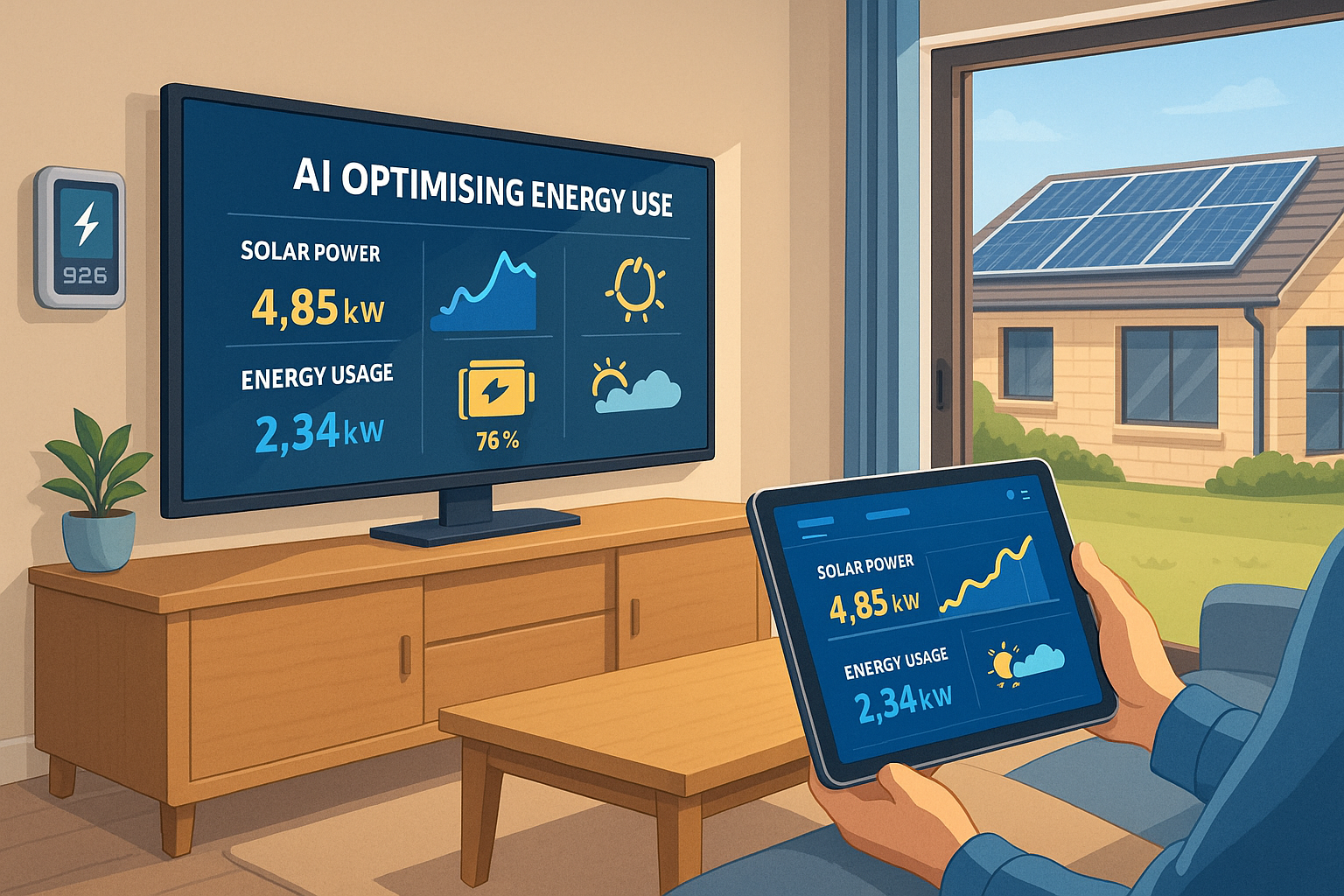Artificial Intelligence (AI) and smart meters are transforming how Australians use and manage solar power. These technologies don’t just measure electricity — they learn from it, predicting patterns, optimising output, and maximising savings automatically.
In 2026, more homes and businesses are using AI-powered energy systems than ever before. Together, AI and smart meters are driving a new era of efficiency, turning standard solar setups into intelligent, self-optimising systems.
Let’s explore how this works — and why it’s changing the future of solar energy.
What Are Smart Meters and Why Do They Matter?
A smart meter is a digital device that records your electricity use in real time and communicates it directly to your energy retailer. Unlike old meters, which only record total usage, smart meters measure energy use every 30 seconds or less.
For solar users, this data is incredibly powerful. It tells you:
- When your solar panels are generating the most energy
- How much electricity you’re exporting to the grid
- When you’re using power from the grid instead of solar
This information helps you make smarter choices about when to run appliances, charge your EV, or store excess energy in your battery.
Tip: Smart meters can also detect faults early — so you know if your inverter or panels aren’t performing properly.
How AI Optimises Solar Energy Efficiency
AI takes smart data a step further. Using algorithms and predictive learning, AI-powered systems analyse your home’s energy patterns, weather forecasts, and grid prices to optimise every watt of your solar production.
Here’s what AI can do for solar homes:
- Predict sunlight hours and adjust power usage accordingly
- Automatically charge or discharge batteries based on forecasted demand
- Optimise feed-in tariffs by selling energy at higher-value times
- Coordinate EV charging when solar generation peaks
- Detect underperformance or faults in real time
By continuously learning from your household behaviour, AI systems help you get more value out of your panels — without constant manual monitoring.
Smart Meters + AI = Smarter Solar Homes
When AI software integrates with smart meters, you get a self-managing energy ecosystem.
For example:
- Your smart meter tracks when you use and produce energy.
- Your AI system analyses that data, predicts your needs, and adjusts appliance usage or battery settings automatically.
Together, they ensure your home consumes more solar energy directly — rather than exporting it cheaply to the grid.
This means lower bills, reduced grid dependency, and faster payback times for your solar investment.
How Australians Are Benefiting in 2026
Across Australia, energy consumers are using smart technologies to take more control over their energy usage. According to Energy Consumers Australia, the shift toward digital energy systems has empowered homeowners to monitor and reduce their consumption more effectively.
Smart meters have also made billing more transparent and accurate, eliminating estimation errors and helping households align energy use with solar generation.
In regions like NSW and Victoria, AI-driven systems are even being tested for virtual power plant (VPP) participation — where homeowners can sell stored energy back to the grid for profit.
AI in Action: Real-World Examples
Let’s look at how AI is being used right now:
- SolarEdge Smart Systems – These inverters use AI to detect shading issues and optimise each panel’s performance individually.
- Fronius Solar.web – Predicts energy generation and consumption based on past data.
- Tesla Powerwall AI Integration – Learns your energy habits and adjusts battery cycles automatically.
- Smart Home Integration – AI assistants like Alexa or Google Home can now trigger appliances based on solar availability.
Each of these examples shows how AI and automation can help you use more of your solar energy when it matters most.
What About Batteries?
Smart meters and AI complement solar batteries perfectly. With real-time monitoring and prediction, they decide when to store excess energy and when to release it.
This means your battery won’t discharge too early — or stay full when solar generation peaks. As a result, you’ll rely less on the grid and enjoy greater independence.
If you’re considering adding a battery to your solar system, this guide breaks down the pros and costs:
Are Solar Batteries Worth It?
How to Get Started with Smart Solar
You don’t need to replace your existing panels to benefit from AI and smart metering. Many systems can be upgraded with compatible inverters, monitoring software, or battery management systems.
To get the best setup:
- Choose a CEC-accredited installer who understands AI integration
- Ask for smart meter-compatible inverters
- Ensure you have remote monitoring access for performance tracking
Get local expert advice and quotes here: Request Solar Quotes
Your Next Steps
AI and smart meters are reshaping how Australians manage energy — turning solar systems into intelligent, responsive tools for efficiency and savings.
✅ Step 1: Learn about smart energy systems → Energy Consumers Australia
✅ Step 2: Explore if a battery upgrade fits your system → Are Solar Batteries Worth It?
✅ Step 3: Get tailored installer quotes → Request Solar Quotes
By combining AI, smart meters, and solar power, you’ll gain total control over your energy — and future-proof your home for years to come.

